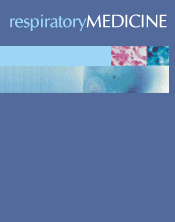
Autor: Ramos RP, Ferreira EV, Valois FM, Cepeda A, Messina CM, Oliveira RK, Araújo AT, Teles CA, Neder JA, Nery LE, Ota-Arakaki JS
Respir Med. 2016 Nov;120:70-77. doi: 10.1016/j.rmed.2016.09.020. Epub 2016 Oct 1.
Abstract
INTRODUCTION:
Great ventilation to carbon dioxide output (ΔV˙E/ΔV˙CO2) and reduced end-tidal partial pressures for CO2 (PetCO2) during incremental exercise are hallmarks of chronic thromboembolic pulmonary hypertension (CTEPH) and idiopathic pulmonary arterial hypertension (IPAH). However, CTEPH is more likely to involve proximal arteries, which may lead to poorer right ventricle-pulmonary vascular coupling and worse gas exchange abnormalities. Therefore, abnormal PetCO2 profiles during exercise may be more prominent in patients with CTEPH and could be helpful to indicate disease severity.
METHODS:
Seventy patients with CTEPH and 34 with IPAH underwent right heart catheterization and cardiopulmonary exercise testing. According to PetCO2 pattern during exercise, patients were classified as having an increase or stabilization in PetCO2 up to the gas exchange threshold (GET), an abrupt decrease in the rest-exercise transition or a progressive and slow decrease throughout exercise. A subgroup of patients with CTEPH underwent a constant work rate exercise test to obtain arterial blood samples during steady-state exercise.
RESULTS:
Multivariate logistic regression analyses showed that progressive decreases in PetCO2 and SpO2 were better discriminative parameters than ΔV˙E/ΔV˙CO2 to distinguish CTEPH from IPAH. This pattern of PetCO2 was associated with worse functional impairment and greater reduction in PaCO2 during exercise.
CONCLUSION:
Compared to patients with IPAH, patients with CTEPH present more impaired gas exchange during exercise, and PetCO2 abnormalities may be used to identify more clinically and hemodynamically severe cases.
Copyright © 2016 Elsevier Ltd. All rights reserved.


